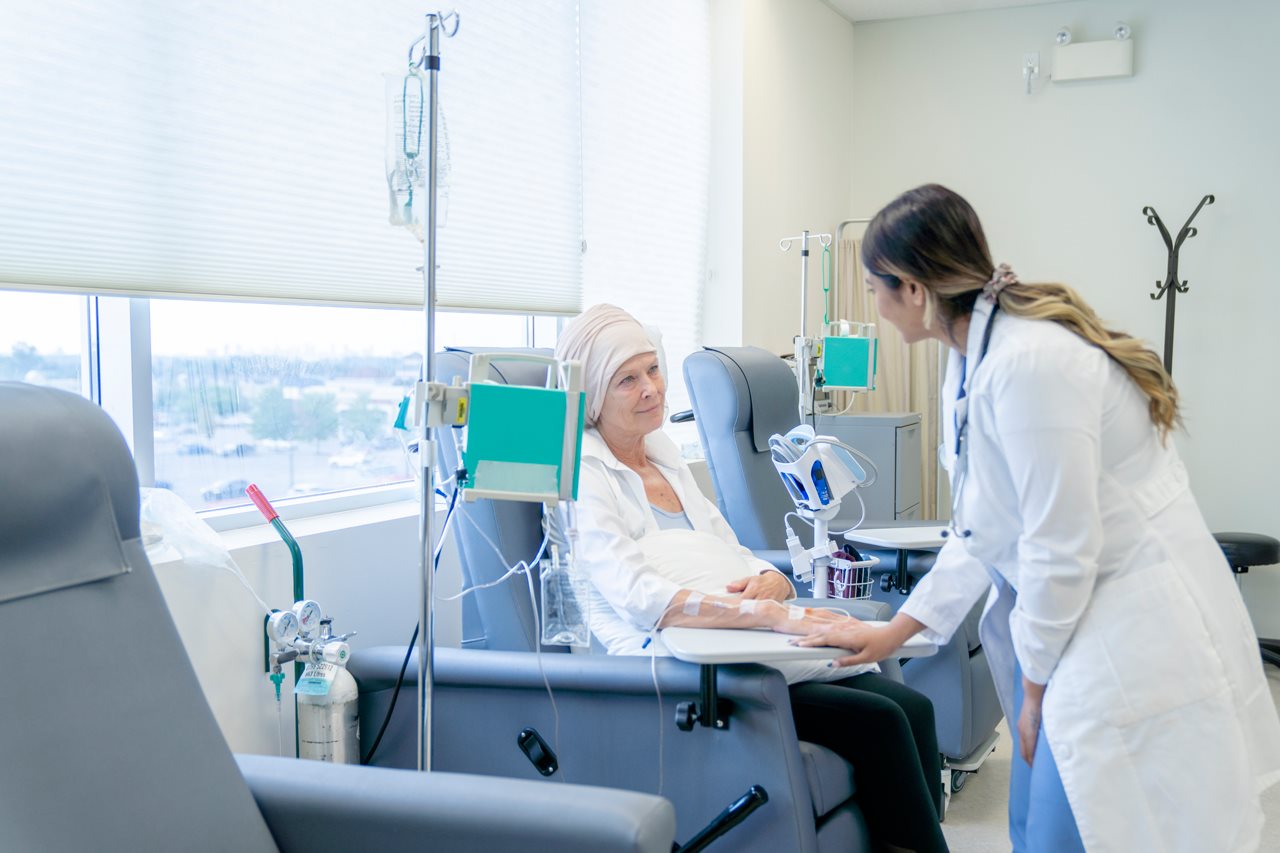
(BPT) - Small cell lung cancer (SCLC) is a rare disease in which cancerous cells form in the tissues of the lung, accounting for ~15% of all lung cancers.1 'Small cell' refers to the small, uniform nature of the cells under the microscope - contrary to non-small cell, where cells vary in both size and shape.
SCLC is typically categorized into two stages: limited stage and extensive stage, the latter describing cancers that have spread widely throughout the lung, to the other lung, to lymph nodes across the chest, or even to other parts of the body, such as the bone marrow. Because of the aggressive nature of the condition, 80-85% of patients are diagnosed with SCLC once it has reached this extensive-stage.2 With this, early detection and diagnosis can offer the best chance of successful treatment for people living with SCLC.
In recognition of Lung Cancer Awareness Month, let's take a closer look to better understand the treatment journey of those living with SCLC.
Chemotherapy helps destroy the tumor, but also healthy bone marrow.
Because SCLC spreads quickly throughout the body, intravenous treatment such as chemotherapy remains a cornerstone of care; however, while chemotherapy works to destroy cancer cells, it does not have the ability to differentiate between cancer cells and healthy cells - ultimately damaging both.
One harmful side effect of chemotherapy is damage to the bone marrow - the parent source of multiple cell types, including red blood cells, white blood cells, and platelets. When the bone marrow is damaged, this results in low blood cell count, also known as myelosuppression.
Myelosuppression can have serious consequences.
Myelosuppression can put people at increased risk of infection, fatigue, and bleeding.3 To better understand its impact, it's helpful to first understand the functions each of our cell-types play in supporting our bodies:
- White blood cells are responsible for fighting infection, so when white blood cell counts are low - the scientific term is neutropenia - people are at a higher risk of infection;
- Red blood cells carry oxygen around the body, so when red blood cell counts are low - also known as anemia - this can lead to feelings of weakness, fatigue, dizziness or difficulty breathing;
- Platelets help clot blood, so with fewer platelets - called thrombocytopenia - there is a higher risk of bleeding or excessive bruising.
Having low blood cell counts or platelets can negatively impact people's health and treatment, which can result in hospitalization, the need for blood transfusions or rescue interventions, as well as reduction in dose or delays in chemotherapy treatment.4,5 In fact, neutropenia and anemia are two of the top reasons people being treated with chemotherapy enter the emergency room or hospital.6

Mitigating myelosuppression is possible.
For people undergoing chemotherapy, traditional treatment options for myelosuppression often promote and replace cells that have been damaged or depleted due to the chemotherapy and aim to stimulate the recovery of damaged cells. These interventions are used with the goal of stimulating or replacing individual cell lineages after the damage from chemotherapy occurs and can include:
- G-CSFs (Granulocyte-Colony Stimulating Factor) are typically given to people who experience neutropenia (low white blood cell counts) after chemotherapy to help stimulate the body to produce more white blood cells (neutrophils) to protect against infection;
- ESAs (Erythropoietin Stimulating Agent) are given to people who experience anemia after chemotherapy to stimulate the bone marrow to make red blood cells;
- Red blood cell transfusions provide another option for people with anemia but can create other burdens for the patient including additional travel for appointments and procedures.
- While there are no approved treatments for chemotherapy-induced thrombocytopenia, healthcare providers may consider platelet transfusions for people with low platelets.
Alternatively, some people with SCLC may have the option to receive treatment in advance of chemotherapy which may help reduce the negative effects of chemotherapy on bone marrow cells. If you or someone you know has been diagnosed with SCLC, talk to your healthcare provider about your options. If you are interested in learning more about the effect of chemotherapy on multiple blood cell lineages, click here.
This content is sponsored by G1 Therapeutics.
References
1American Cancer Society. What Is Lung Cancer? Available from: https://www.cancer.org/cancer/types/lung-cancer/about/what-is.html. Accessed November 2, 2023.
2Schwendenwein A, Megyesfalvi Z, Barany N. et al. Molecular profiles of small cell lung cancer subtypes: therapeutic implications. Mol Ther Oncolytics. 2021;20:470-483.
3Cleveland Clinic. Myelosuppression (Bone Marrow Suppression. Available from: https://my.clevelandclinic.org/health/diseases/24788-myelosuppression. Accessed November 2, 2023.
4Kurtin S. Myeloid toxicity of cancer treatment. J Adv Pract Oncol. 2012;3(4):209-224.
5American Cancer Society. Kinds of Blood Product Transfusions. Available from: https://www.cancer.org/cancer/managing-cancer/treatment-types/blood-transfusion-and-donation/what-are-transfusions.html. Access November 2, 2023.
6Hassett MJ, O'Malley AJ, Pakes JR, et al. Frequency and cost of chemotherapy-related serious adverse effects in a population sample of women with breast cancer. J Natl Cancer Inst. 2006;98(16):1108-1117.
